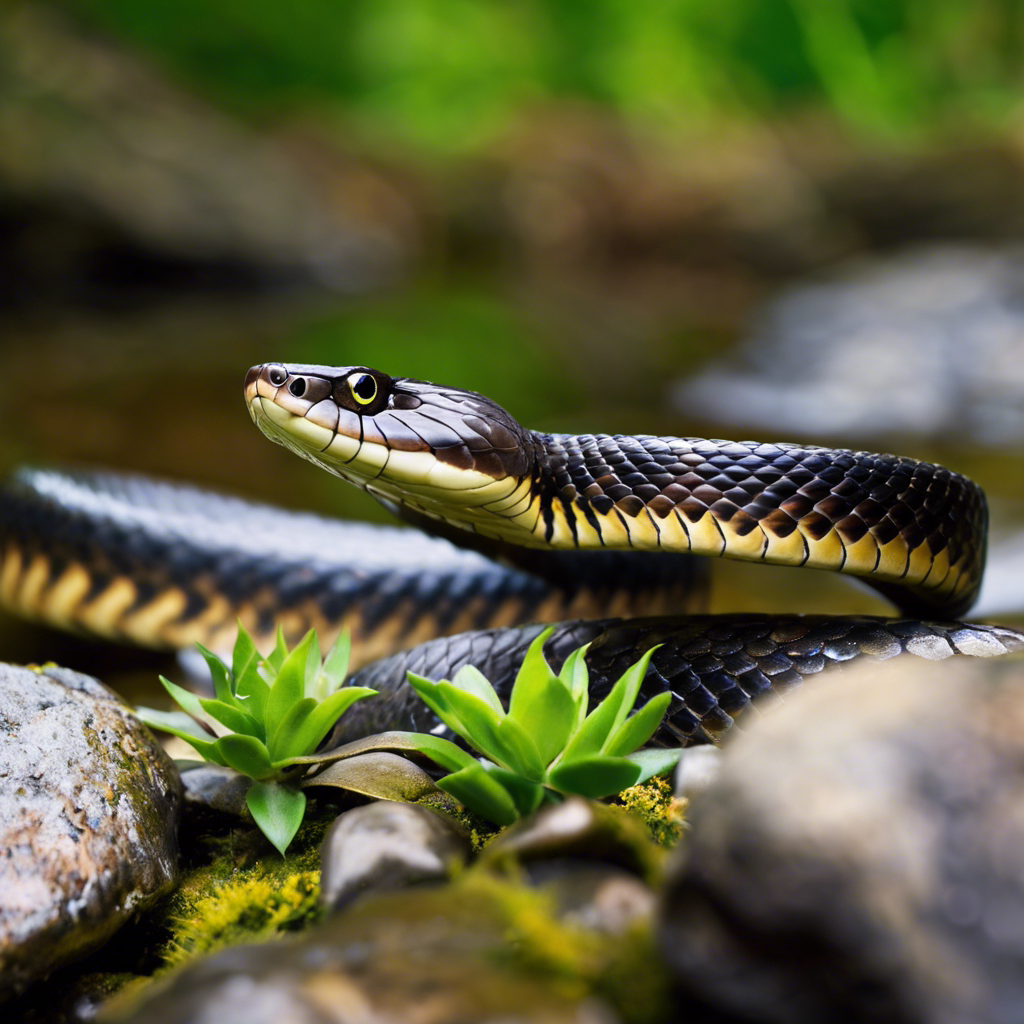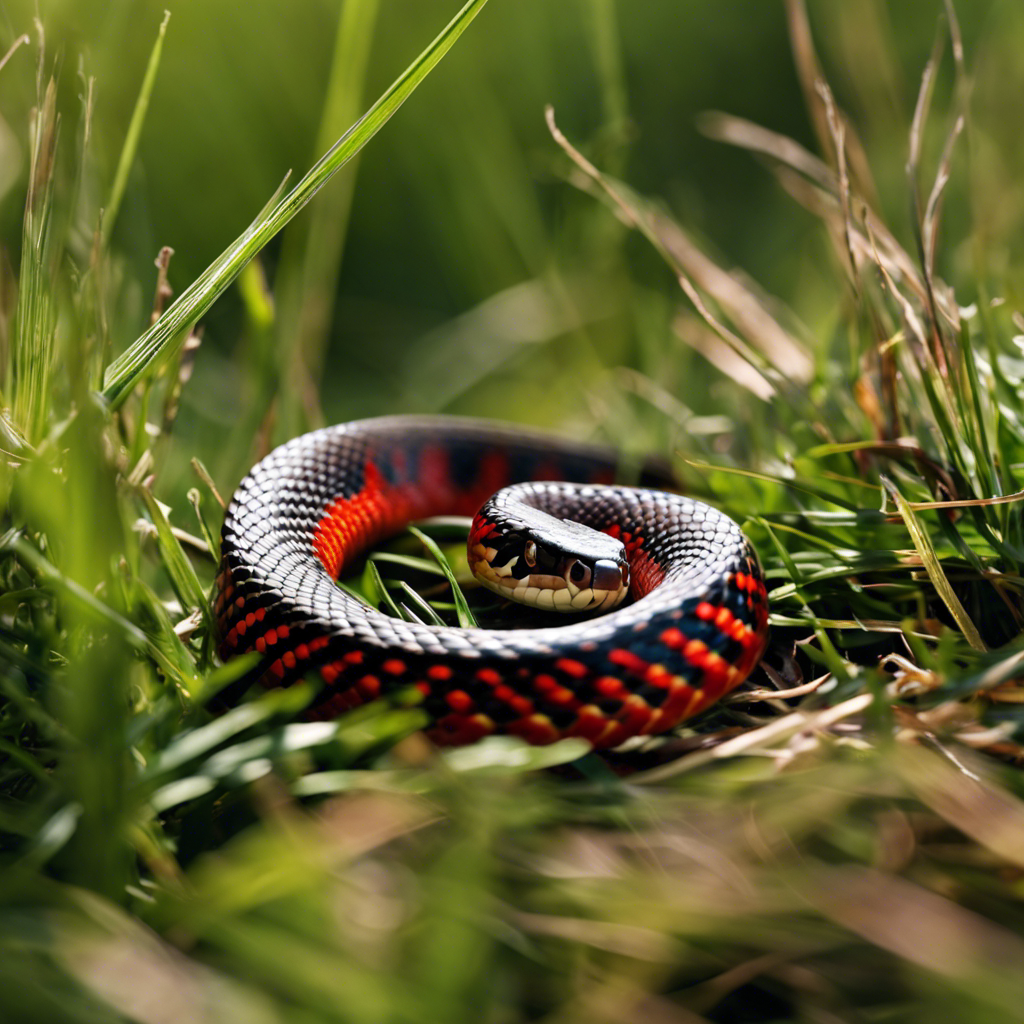As a seasoned herpetologist, my experience exploring the enchanting wilderness of Pennsylvania has led me to uncover the hidden world of reptiles that thrive in its rich ecosystems.
Among the dappled sunlight and gentle rustling of leaves, I have had the privilege of encountering the elusive Copperheads and the graceful Box Turtles, each playing a crucial role in the delicate balance of nature.
With every step I take, I believe these fascinating reptiles are silently observing me, their presence a reminder of the interconnectedness of all living beings in this remarkable landscape.
Key Takeaways
- Venomous pit vipers like Eastern Copperheads and Timber Rattlesnakes are crucial for rodent population control.
- Water-associated snakes such as Northern Watersnakes play a vital role in ecosystem balance and predator protection.
- Common snakes like Eastern Garter Snakes thrive in varied habitats and contribute to rodent control for ecosystem health.
- Unique behavior snakes like Eastern Hog-nosed Snakes add intrigue to the ecosystem and emphasize the importance of coexistence.
Eastern Copperhead

The Eastern Copperhead is a venomous pit viper species native to Pennsylvania. It is recognized for its striking copper-colored head and distinctive hourglass-shaped markings. These native reptiles are essential to the ecosystem, playing a crucial role in controlling rodent populations in their habitat.
Despite their venomous nature, Eastern Copperheads are generally shy and tend to avoid human interaction whenever possible. When feeling threatened or provoked, they may strike, although they often give warnings beforehand. It’s important to note that while they’re venomous, their bites are rarely fatal to humans if treated promptly.
Understanding and respecting the presence of these reptiles, alongside other native species like the Timber Rattlesnake, is crucial for coexisting harmoniously with Pennsylvania’s diverse wildlife.
Timber Rattlesnake

Native to Pennsylvania, the Timber Rattlesnake is a venomous species recognized for its distinctive rattling sound warning of potential threats. These snakes are among the largest venomous reptiles in the state, reaching lengths of up to 5 feet. Their role in controlling rodent populations makes them essential to the ecosystem. Conservation efforts are crucial for protecting the Timber Rattlesnake from habitat loss and human persecution.
| Fact | Description |
|---|---|
| Species | Crotalus horridus |
| Length | Up to 5 feet |
| Distinctive Feature | Rattling sound warning system |
| Conservation Status | Efforts in place due to habitat loss and human threats |
Northern Watersnake

How does the Northern Watersnake’s distinct pattern help it in its habitat near water sources in Pennsylvania? The Northern Watersnake, Nerodia sipedon, utilizes its dark bands on a lighter background to blend seamlessly into its surroundings near water sources, aiding in camouflage and stealth while hunting for prey. These patterns serve as a form of protection against potential predators and help them ambush their prey effectively.
The intricate coloration of the Northern Watersnake evokes a sense of wonder and admiration for the diversity of nature.
Their ability to adapt to aquatic environments showcases the resilience of these fascinating reptiles.
Observing a Northern Watersnake in its natural habitat teaches us about the interconnectedness of ecosystems and the importance of every species, from fish to amphibians, in maintaining balance.
Eastern Garter Snake

Inhabiting various ecosystems across Pennsylvania, the Eastern Garter Snake demonstrates remarkable adaptability and plays a crucial role in maintaining ecological balance through its diverse diet and habitat preferences.
The Pennsylvania Fish and Boat Commission recognizes the Eastern Garter Snake as one of the most common snakes within the state. These non-venomous snakes are easily identifiable by the three light stripes that run along their dark bodies.
Feeding primarily on small amphibians, earthworms, and insects, they aid in controlling pest populations, thus contributing to the ecosystem’s health. Their ability to thrive in various habitats such as grasslands, forests, and wetlands showcases their resilience and versatility.
As essential members of the ecosystem, Eastern Garter Snakes also serve as prey for numerous predators, further emphasizing their ecological significance.
Eastern Milksnake

The Eastern Milksnake, known as the ‘Pilot Black Snake,’ showcases a distinctive coloration pattern of red, black, and white bands for protective mimicry. These snakes are non-venomous constrictors that can be found in Pennsylvania, playing a crucial role in the ecosystem. They primarily feed on small mammals, birds, reptiles, and amphibians, using constriction to subdue their prey. Eastern Milksnakes are adept climbers, inhabiting various environments such as forests, fields, and rocky areas. Despite their intimidating appearance, they’re harmless to humans and are beneficial in controlling rodent populations. Remember, these fascinating creatures contribute to the balance of nature in your jurisdiction.
- Witness their remarkable mimicry of the venomous Coral Snake.
- Appreciate their role in maintaining ecological harmony.
- Admire their skillful hunting techniques.
Gray Ratsnake

The sizable Gray Ratsnake, also known as the Black Ratsnake in Pennsylvania, commands attention with its impressive length exceeding 6 feet and plays a crucial role in maintaining ecological balance by controlling rodent populations. These non-venomous constrictors are excellent climbers, often found in wooded areas, rock outcroppings, and old buildings in search of prey. Their distinctive gray to black coloration with a white belly and fading patterns on their scales make them easily recognizable. Despite their size, Gray Ratsnakes are docile and rarely pose a threat to humans. The Pennsylvania Boat Commission has jurisdiction over these fascinating reptiles and amphibians, ensuring their protection and conservation.
| Gray Ratsnake Facts | Details | Importance |
|---|---|---|
| Length | Over 6 feet | Impressive size for rodent control |
| Habitat | Wooded areas, old buildings | Maintains ecological balance |
| Coloration | Gray to black with white belly | Easily recognizable in the wild |
Eastern Hog-nosed Snake

Surveying the Pennsylvania landscape, one can’t overlook the presence of the Eastern Hog-nosed Snake, a fascinating non-venomous reptile known for its unique features and behaviors.
These snakes hold jurisdiction over reptiles in their habitat, showcasing their dominance through their distinctive defensive displays. Witnessing an Eastern Hog-nosed Snake in action is akin to watching a skilled captain maneuver a boat through rough waters – graceful yet powerful.
Their place of tolerance within the ecosystem highlights the importance of coexistence with all creatures, no matter how misunderstood.
The Eastern Hog-nosed Snake’s ability to mimic death to deter threats adds a layer of intrigue to their already captivating presence.
Frequently Asked Questions
What Is the Most Common Lizard in Pennsylvania?
The most common lizard in Pennsylvania is the Eastern Fence Lizard. Recognizable by its blue throat and belly patches, these lizards thrive in open woodlands and rocky areas. They are diurnal insect controllers, vital for the ecosystem.
What Is Pennsylvania Reptile?
In Pennsylvania, reptiles encompass a variety of species like snakes, turtles, and lizards. Their presence contributes significantly to the ecosystem’s health and balance. Understanding and protecting these reptiles is crucial for maintaining biodiversity in the state.
What Are the Tiny Black Lizards in Pa?
In Pennsylvania, the tiny black lizards you’re likely seeing are Common Five-Lined Skinks. These small reptiles have dark bodies with five light stripes. Skinks feed on insects, are agile, and play a vital role in controlling insect populations.
Do Geckos Live in Pennsylvania?
Geckos do not naturally inhabit Pennsylvania. The state’s climate and environment do not favor geckos, which are typically found in warmer regions. If geckos are seen in Pennsylvania, they are likely exotic pets rather than wild inhabitants.
Conclusion
In conclusion, Pennsylvania boasts a diverse array of reptile species, with the Eastern Copperhead, Timber Rattlesnake, and Northern Watersnake being among the most common.
These reptiles play crucial roles in the state’s ecosystem and contribute to its rich biodiversity.
Their unique characteristics and behaviors make them fascinating subjects for study and observation, highlighting the importance of conservation efforts to protect these valuable reptilian populations in Pennsylvania.

An avid ornithologist, zoologist and biologist with an unwavering passion for birds and wild animals.
Dr. Wilson’s journey in ornithology began in childhood and led him to obtain a Ph.D. in Ornithology from the prestigious Avian Research Institute. He has worked closely with renowned experts in the field and conducted extensive research and field studies globally.
